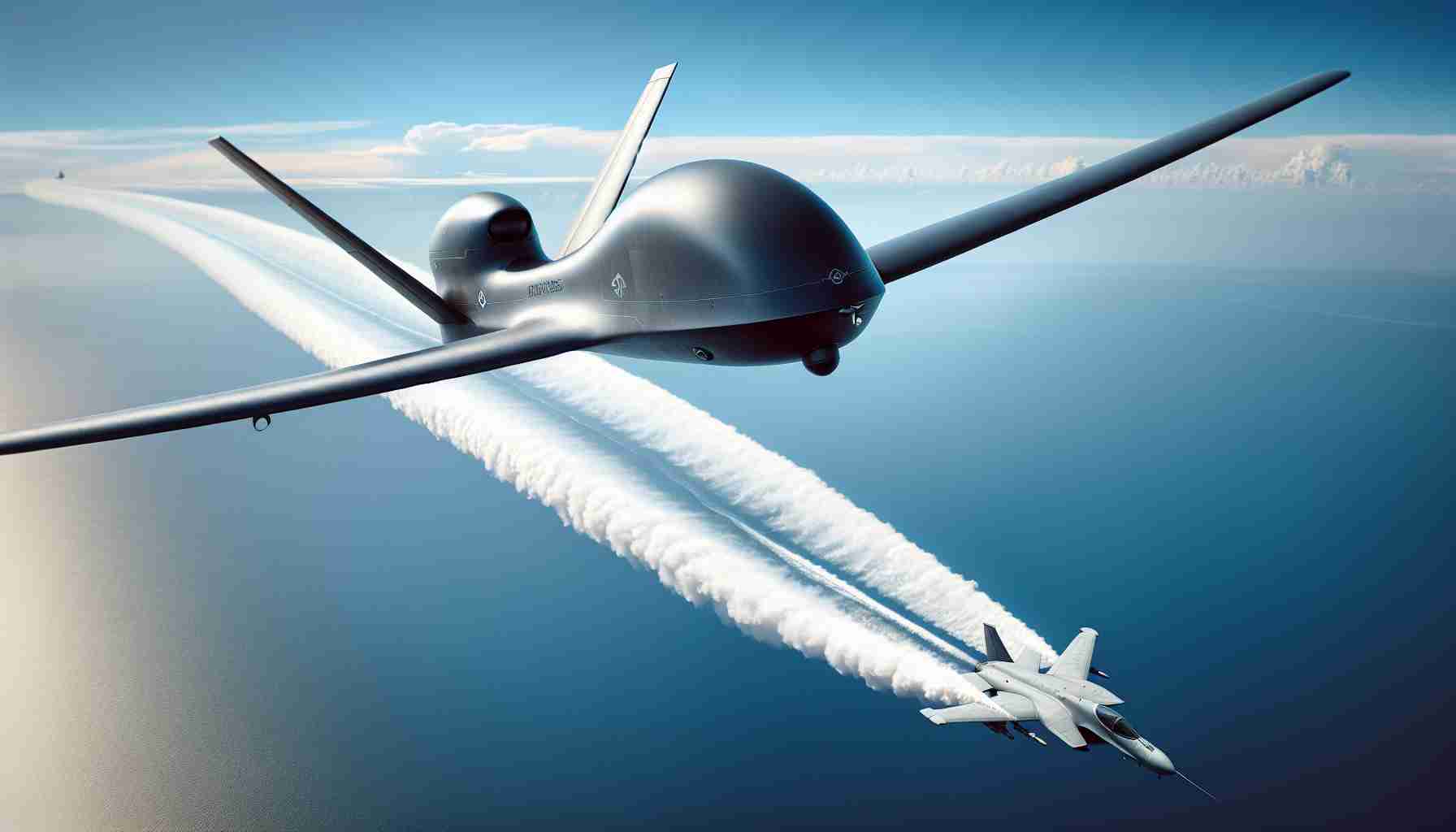- Heven Drones introduces the Raider, a hydrogen-powered unmanned aerial system poised to transform drone warfare.
- Featuring a twin fuselage design, the Raider offers vertical take-off and landing, and versatile payload options, making it highly adaptable for modern battlefields.
- Weighing 50 pounds, it aligns with U.S. Department of Defense standards, indicating potential market expansion.
- Hydrogen power enhances stealth by minimizing thermal trails and boosts energy efficiency fivefold compared to standard batteries.
- The Raider can travel up to 1,000 kilometers and stay airborne for ten hours, offering a cost-effective alternative to traditional UAVs.
- The Raider is expected to have its maiden flight this year, with full operational status projected for 2026.
Amid the bustling streets of Jerusalem, Heven Drones is setting its sights beyond the horizon, introducing a groundbreaking innovation — the Raider. This hydrogen-powered unmanned aerial system promises to redefine the role of drones in modern conflicts. With tensions flaring across global hotspots, from Ukraine to the Middle East, drones are shedding their “flying camera” identity, evolving into indispensable “flying robots.”
Imagine the silhouette of the Raider against a twilight sky — a sleek twin fuselage design capable of vertical take-off and landing. This engineering marvel is as adaptable as it is advanced, featuring versatile payload options tailored to meet the rigorous demands of today’s battlefield. Weighing in at a modest 50 pounds, the Raider fits seamlessly with U.S. Department of Defense standards, highlighting the potential for expansion into American markets.
Why hydrogen? Traditional drone engines leave a thermal trail, making them easily detectable. By shifting to hydrogen, Heven Drones aims to cloak their creation in stealth. This isn’t just technical speculation; the Raider boasts an impressively low radar cross-section and unparalleled energy efficiency — five times that of typical batteries.
In a world where frontiers are often defined by new technologies, Heven Drones places itself at the cutting edge, offering a drone that can navigate up to 1,000 kilometers and remain airborne for ten hours. The Raider could potentially operate at a fraction of the cost of conventional medium-altitude, long-endurance UAVs, promising accessibility without compromising capability.
Prepare for lift-off: the Raider is poised for its maiden flight this year, with expectations set for full operational status by 2026. All eyes now turn toward IDEX, where Heven’s latest innovation will undoubtedly capture imaginations and change paradigms. The future of drone warfare is unfolding, bathed in the soft glow of hydrogen efficiency.
Unlocking the Future: How the Raider Drone is Revolutionizing Modern Warfare
Exploring the Raider Drone: Features, Specs, & Innovations
The Raider by Heven Drones represents a significant leap forward in unmanned aerial systems. Let’s delve deeper into its specs, potential uses, and the factors that set it apart from conventional drones.
Hydrogen Power: The Raider’s Core Innovation
– Why Hydrogen? Hydrogen-powered systems provide remarkable stealth by eliminating the thermal trails typical of traditional fuel-based drones. This makes them less detectable and more energy-efficient, boasting energy efficacy five times greater than standard batteries, as highlighted in the source article. [Hydrogen Council](https://hydrogencouncil.com)
– Flight Capabilities: The Raider can cover a staggering distance of up to 1,000 kilometers with a flight endurance of up to ten continuous hours.
Design and Usability
– Sleek and Stealthy: Featuring a twin-fuselage design, the Raider is engineered for vertical take-off and landing, enhancing its operational flexibility.
– Payload Versatility: This drone can be outfitted with various payloads, allowing it to adapt to different military and reconnaissance requirements. This adaptability makes it a strong contender for integration with U.S. Department of Defense operations.
Market Forecasts & Industry Trends
The adoption of unmanned aerial systems in military applications is on the rise, with global conflicts accelerating this trend. The hydrogen-powered Raider is poised to play a significant role.
– Defense Sector Growth: According to a report by MarketsandMarkets, the military drone market is expected to grow from USD 12.1 billion in 2021 to USD 26.1 billion by 2025, with growth driven by advancements like hydrogen technology. [MarketsAndMarkets](https://marketsandmarkets.com)
– Hydrogen Economy: ITM Power and others have indicated that the shift toward hydrogen as a primary energy source is gaining momentum due to its sustainability attributes. [ITM Power](https://itm-power.com)
Real-World Use Cases
The Raider’s advanced specifications make it suitable for various military and non-military applications:
– Reconnaissance and Surveillance: Its extensive range and endurance are ideal for long-duration surveillance missions.
– Supply and Logistics: Able to carry diverse payloads, the Raider can efficiently transport supplies across battlefields or remote regions.
– Search and Rescue: Its design and capabilities would be effective in search operations, particularly in challenging terrains.
Pros & Cons Overview
Pros:
– Stealth and Efficiency: Hydrogen power provides unmatched stealth and efficiency.
– Extended Range and Durability: Operates across vast distances for prolonged periods.
– Payload Versatility: Customizable for various missions.
Cons:
– Infrastructure Needs: Requires hydrogen refueling infrastructure, which may not be widespread.
– Initial Cost: Higher initial investment compared to traditional drones.
Controversies & Limitations
While the Raider showcases innovative technology, several challenges and controversies exist:
– Regulatory Hurdles: Compliance with international aviation laws and regulations may pose significant challenges.
– Environmental Concerns: Although hydrogen is cleaner than fossil fuels, the production and logistics of hydrogen still present environmental considerations.
Quick Tips: Maximizing the Raider’s Potential
– Infrastructure Alignment: Ensure infrastructure is in place for hydrogen refueling to maximize efficiency.
– Align with Regulations: Stay ahead of evolving aerospace regulations to maintain deployment readiness.
The Raider by Heven Drones is poised to redefine drone capabilities in military scenarios, offering a blend of stealth, versatility, and efficiency. As nations evaluate strategic drone applications, hydrogen-powered UAVs like Raider are expected to lead transformative advances in this field.
For more on the latest drone innovations, visit [DJI](https://www.dji.com) and [UAV Global](https://uav-global.com).



















